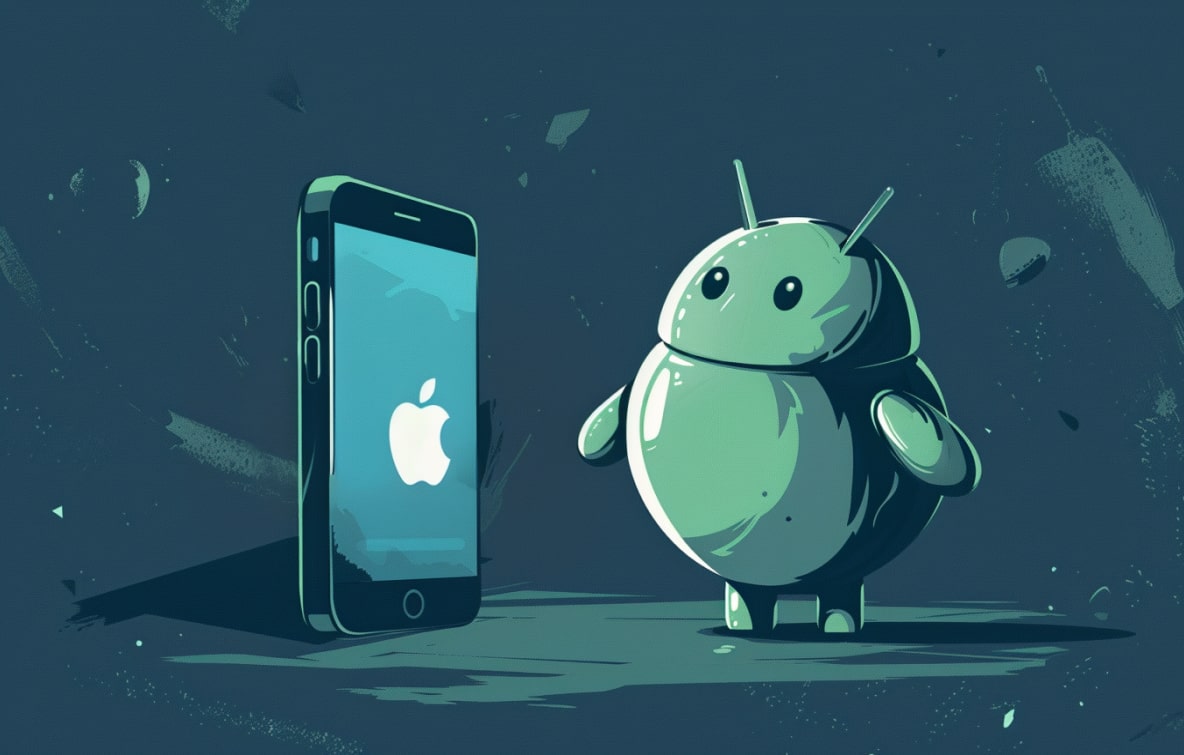


As the mobile app market continues to expand, choosing between iOS and Android development becomes crucial for businesses aiming to maximize their reach and effectiveness. At Hierographx, one of the leading Michigan website design companies, we understand the complexities of this decision. This blog delves into the core differences between developing for iOS and Android, helping you make an informed choice for your next project.
iOS: A Streamlined Ecosystem
Developing for iOS involves using Apple's integrated development environment (IDE), Xcode, which offers a seamless and user-friendly experience. Xcode includes a range of tools such as Interface Builder, which simplifies the design process. The uniformity of iOS devices also means developers can optimize apps for a limited number of screen sizes and hardware configurations.
Android: Flexibility with Variety
Developers use Android Studio, Google's official IDE, for Android development. Android Studio provides robust tools and features but comes with the challenge of a fragmented ecosystem. Developers must ensure compatibility across various devices, screen sizes and hardware specifications, making testing and optimization more complex.
iOS: Swift and Objective-C
Developers primarily use Swift, a modern programming language created by Apple, for developing iOS apps, known for its safety and performance. Objective-C, the predecessor to Swift, is still in use, but Swift's simplicity and efficiency make it the preferred choice for new projects.
Android: Java and Kotlin
Developers typically use Java or Kotlin to develop Android apps. While Java has been a long-standing choice, Kotlin, introduced by Google as an official language for Android development, offers more concise syntax and modern features, making it increasingly popular among developers.
iOS: Consistency and Simplicity
Apple's Human Interface Guidelines (HIG) provide clear directives for designing intuitive and consistent user interfaces. These guidelines emphasize simplicity, clarity and depth, ensuring a uniform experience across all iOS devices.
Android: Customization and Diversity
Android’s Material Design guidelines offer more flexibility, allowing developers to create highly customized and unique user interfaces. However, this flexibility requires careful attention to detail to maintain a consistent user experience across different devices.
iOS: Higher Revenue Potential
iOS users are generally more willing to spend on apps and in-app purchases, making it a lucrative platform for monetization. Apple's stringent app review process ensures higher-quality apps, contributing to a more trustworthy marketplace.
Android: Wider Reach
With a larger global market share, Android offers the potential to reach a broader audience. It is particularly dominant in emerging markets, providing an opportunity to tap into diverse user bases. However, the increased fragmentation can pose challenges in maintaining app quality and performance.
When considering app development, it’s crucial to weigh these market factors. iOS’s higher revenue potential makes it ideal for premium apps and services, while Android’s extensive reach is perfect for apps aiming for widespread adoption. Balancing these aspects can help businesses decide on the right platform to invest in for their app development needs.
iOS: Cost-Effective for Uniformity
The uniformity of iOS devices often results in lower development and maintenance costs. Apple’s controlled ecosystem, which includes a limited range of devices and operating system versions, simplifies the development process. This consistency means fewer variations to test against, allowing for streamlined testing and optimization. Consequently, developers can allocate fewer resources to device-specific issues, reducing overall expenses and speeding up the development cycle.
Android: Investment in Compatibility
Developing for Android can be more costly due to the need to ensure compatibility across numerous devices and OS versions. The Android ecosystem is highly fragmented, with a wide variety of manufacturers, screen sizes and custom OS iterations. This diversity necessitates extensive testing to ensure that the app performs consistently across different devices.
The additional testing and optimization required to achieve a seamless user experience can significantly increase both development time and costs. Moreover, ongoing maintenance can be more intensive as updates and new devices continually enter the market, requiring continuous adjustments and support.
Choosing between iOS and Android development depends on your target audience, budget and long-term goals. Both platforms offer unique advantages and challenges and understanding these can help you make an informed decision. At Hierographx, we specialize in crafting high-quality mobile apps tailored to your business needs. As a premier Michigan web design company, we are here to guide you through every step of the development process, ensuring your app stands out in a competitive market.
Ready to take your app idea to the next level? Contact Hierographx, your trusted partner in Michigan website design and mobile app development, and let’s create something amazing together.